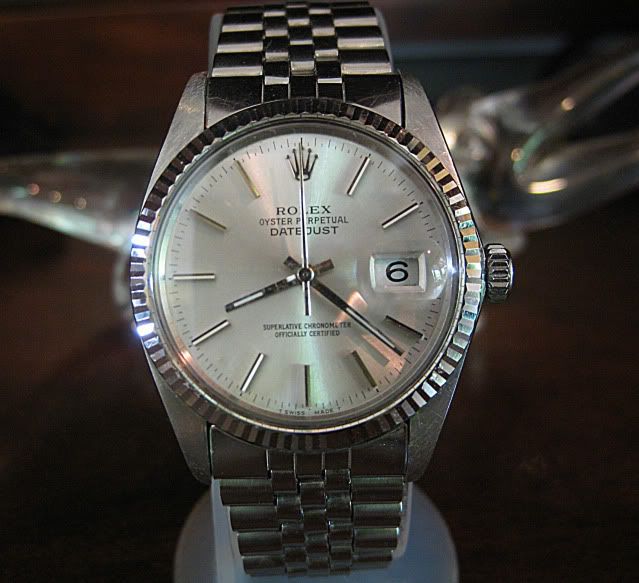- 9/2/09
- 8,915
- 84
- 48
Found a nice post on another forum, thought I'd steal share it here...
Some time ago, this topic came up in another forum where someone questioned why anyone would want to wear white gold when it looks just like stainless steel.
Sometimes it does. Most of the time it doesn't. Sometimes that's not the point.
Let's get the last out of the way. Part of the attraction of white gold is that it is a subtle form of wealth on your wrist that doesn't attract attention except from a discerning few. Platinum has a similar attraction.
When does it look the same as stainless steel? When steel is plated or polished to a mirror finish, and white gold is rhodium plated and polished.
Here are two very dissimilar watches: a modern Eberhardt Postillon 8 Jours and a 1956 LeCoultre Galaxy
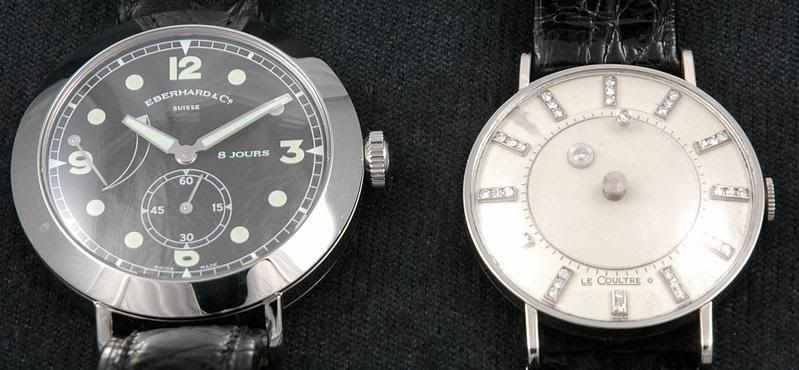
Why these two watches? The Eberhardt is stainless steel with a mirror finish and the LeCoultre is 14k white gold polished to a mirror finish.
Let's turn them over.

If there is a difference, it is not obvious. A difference in tone, but not color -- mostly there is a reflective quality.
But when the difference is obvious is when the metals are not plated and not polished.
I don't have two identical watches in the different metals, but I do have watches with similar characteristics.
A white gold watch with a white gold textured face, with a brushed case, and a bracelet with polished and brushed areas. This is a 1968 Seamaster Day_Date Chronometer.
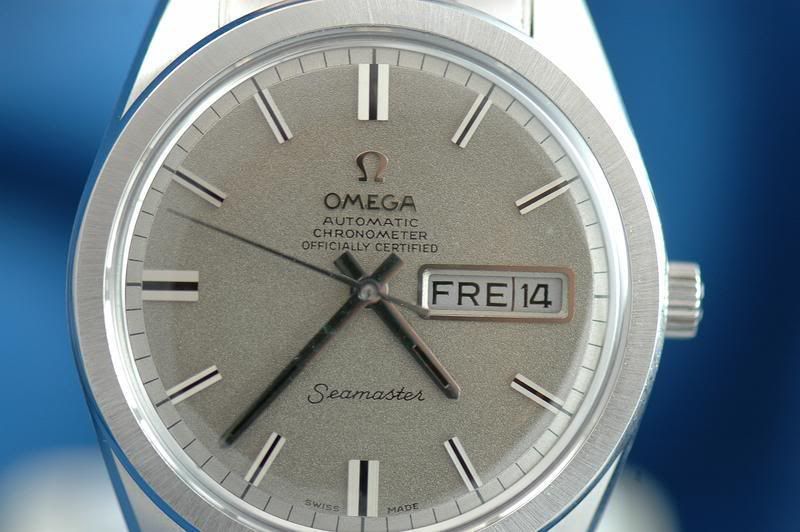
For comparison, the modern Speedy bracelet has both polished and brushed areas. I have two Speedies with silvered faces.
2001 Split Seconds with blued hands, also a chronometer, with the standard stainless steel bracelet (although obviously not in this photo!).
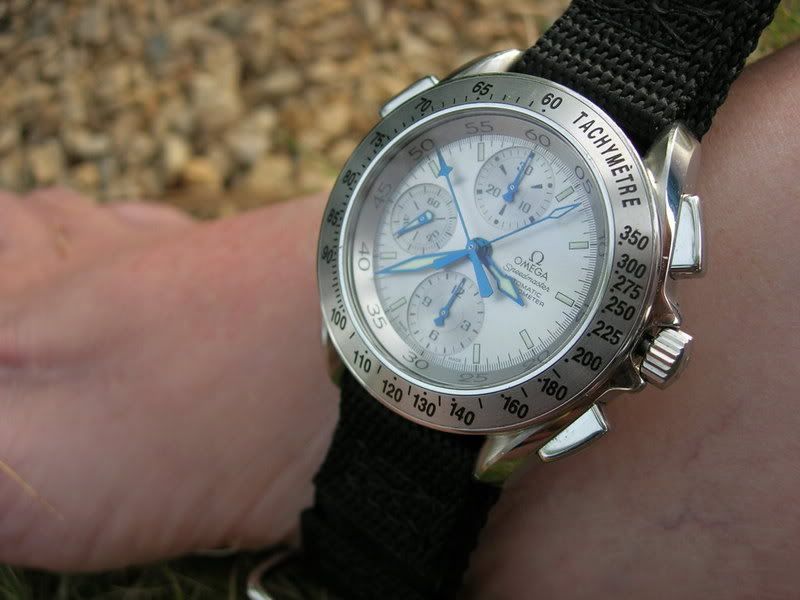
Triple date or full calendar automatic Speedy, garden variety, also with a standard stainless steel bracelet
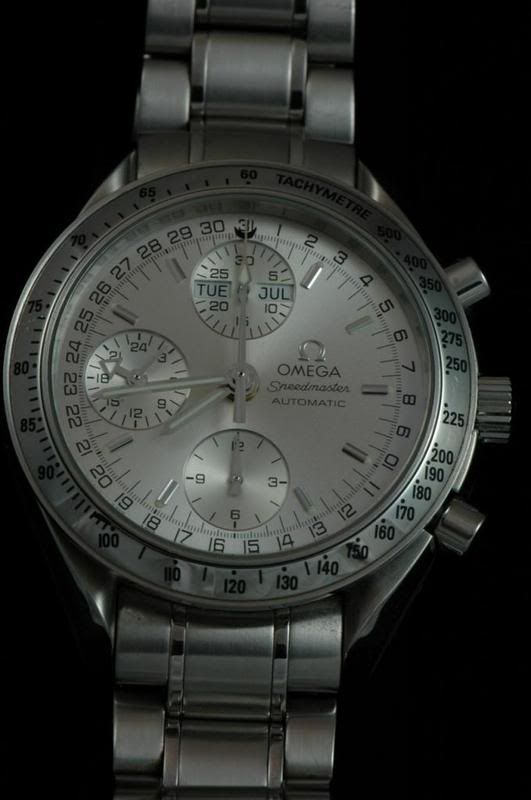
Here's an initial group shot of the three
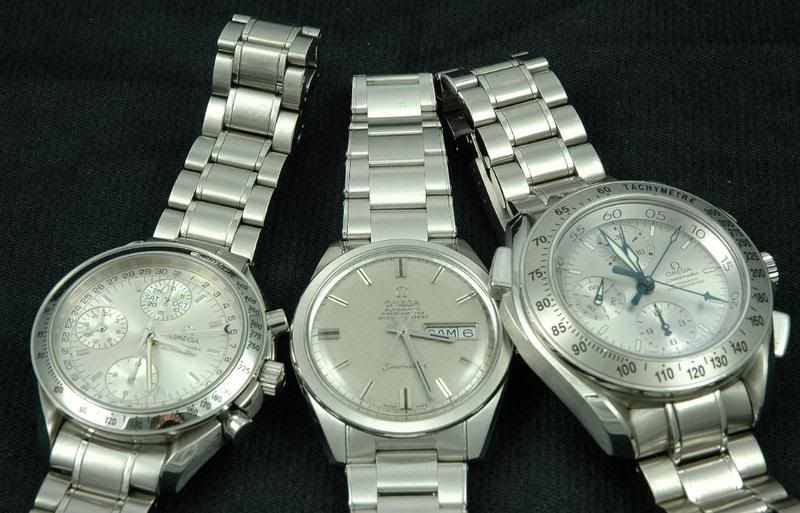
There's a clear difference in the metals. White gold is much "whiter" in the side by side.
Large expanses of polished areas are mostly reflective and the metals lose their distinction, as on the casebacks
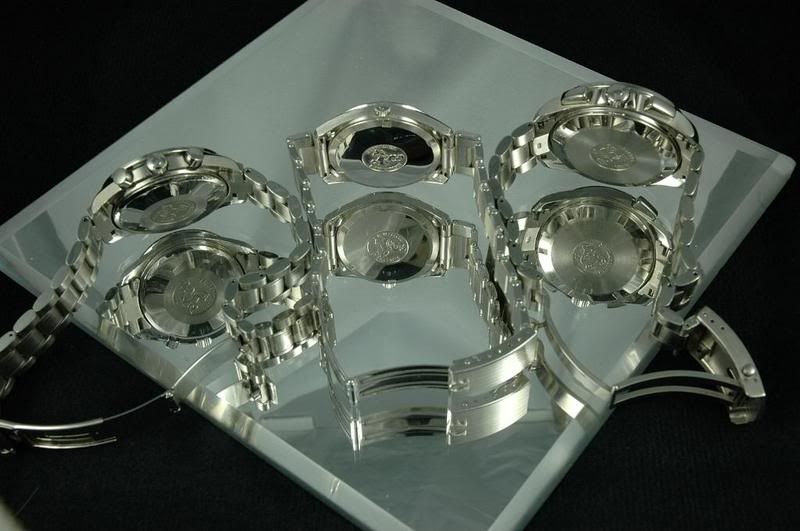
Hard to see much distinction in either the direct or the mirrored images. Let's focus on the brushed areas of the watches on case fronts


The difference is there, but it would be easily overlooked if you didn't have a differing metal for comparison. Let's look just at the brushed and polished areas on the bracelets.
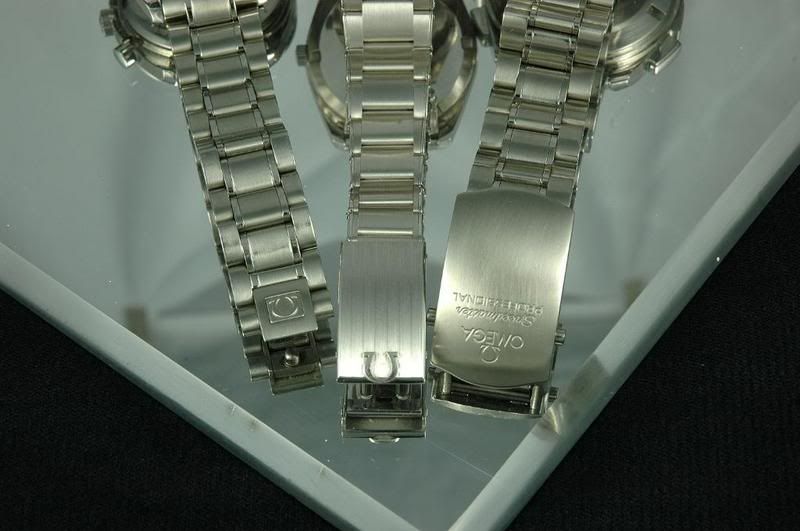
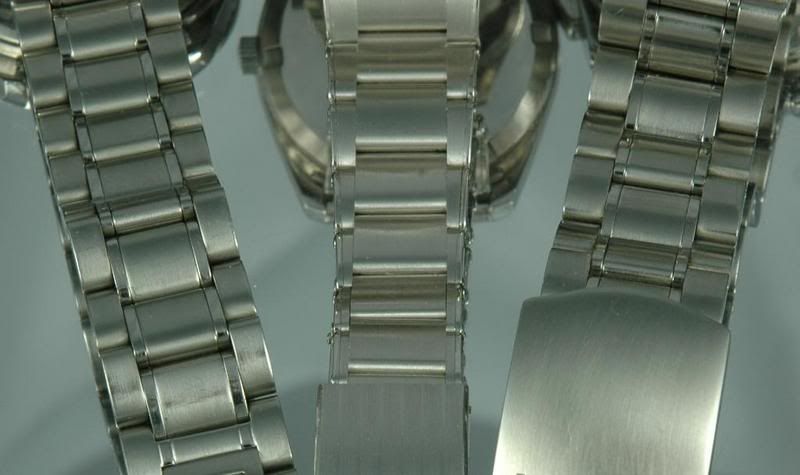

Obvious in the photo, subtle in real life. Intensity and angle of light plays a big part as well. Look at the difference in the two essentially identical Speedy bracelets in these two shots.
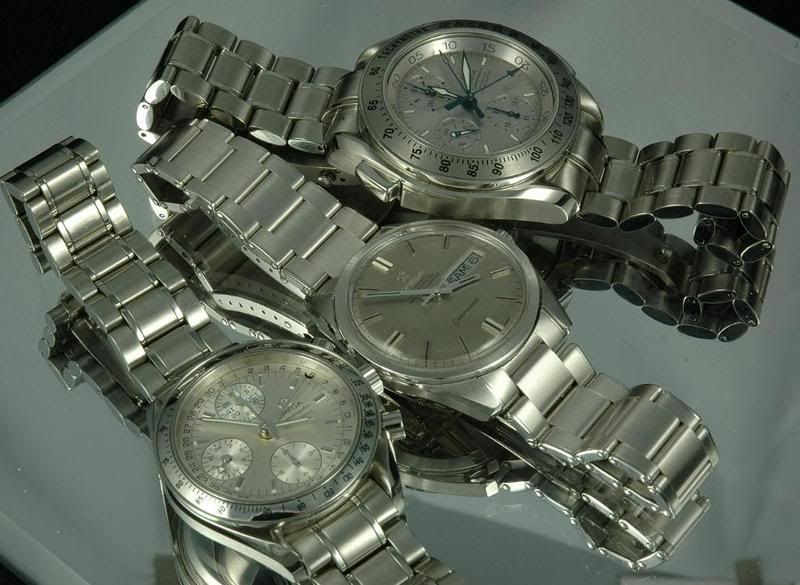
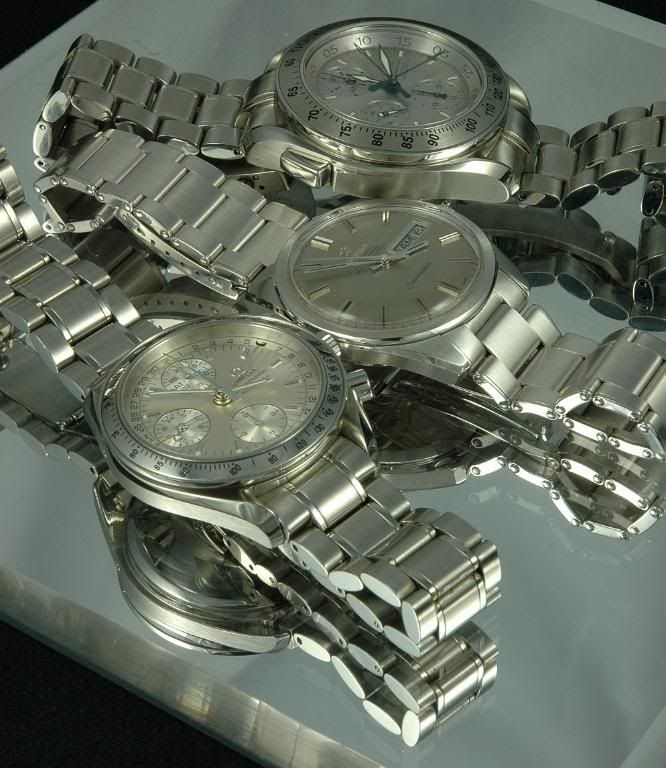
Also notice that the white gold is uniformly white despite the angle of light. Some say white gold seems to have a glow, and retains its whiteness even in dimmer light. Seems to in these photos . . .
As long as we are compaing metals, let's throw titanium into the mix, with a titanium ChronoDiver. This is also a good side by side of the Speedy versus the Bond bracelet on the ChronoDiver.
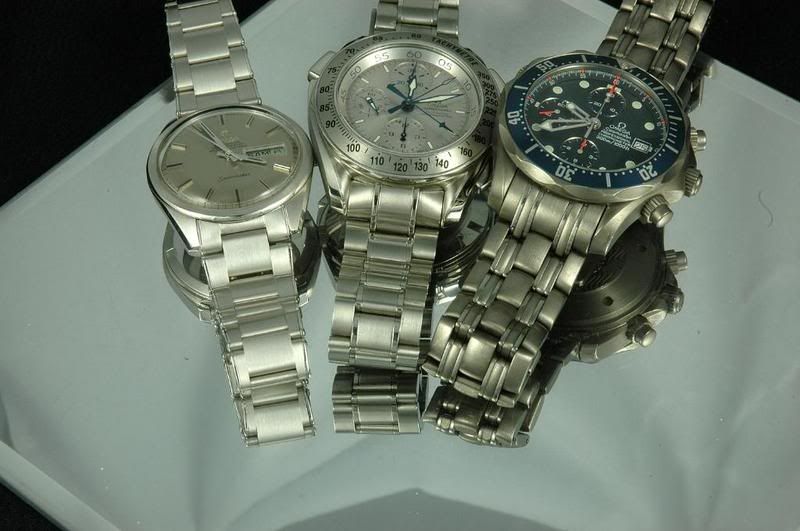
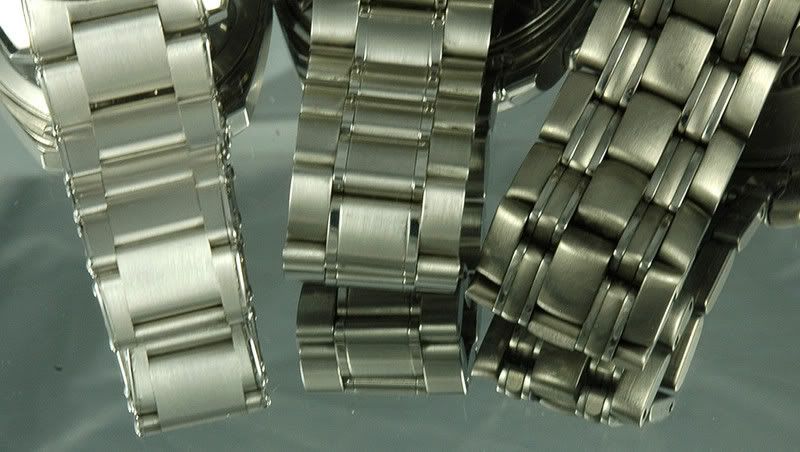

Titanium looks very industrial and less metallic in this company, somehow.
In conclusion, polished white gold and polished stainless steel are difficult to tell apart. Brushed, the metals are easier to tell apart -- very easy if they are side by side.
But the difference is subtle. And if you don't have something beside it to compare to, white gold may go unnoticed by the undiscerning.
If you see a metal that seems to glow a bit even in shadow, and is somehow a bit whiter than usual, suspect it is white gold.
Bet you can pick out which is which now?
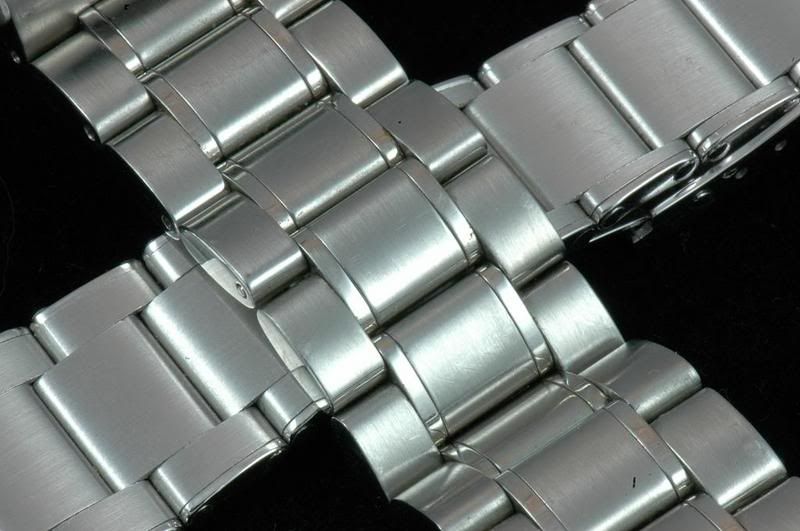

Add a little aluminum for contrast
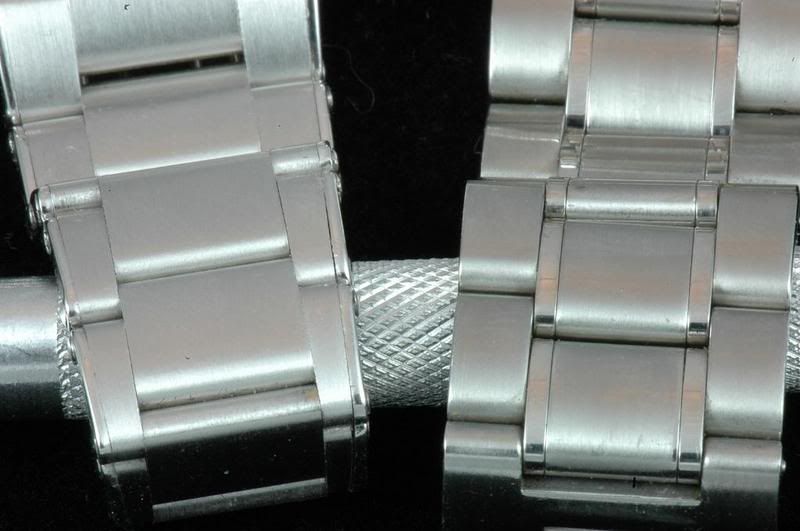
Some time ago, this topic came up in another forum where someone questioned why anyone would want to wear white gold when it looks just like stainless steel.
Sometimes it does. Most of the time it doesn't. Sometimes that's not the point.
Let's get the last out of the way. Part of the attraction of white gold is that it is a subtle form of wealth on your wrist that doesn't attract attention except from a discerning few. Platinum has a similar attraction.
When does it look the same as stainless steel? When steel is plated or polished to a mirror finish, and white gold is rhodium plated and polished.
Here are two very dissimilar watches: a modern Eberhardt Postillon 8 Jours and a 1956 LeCoultre Galaxy

Why these two watches? The Eberhardt is stainless steel with a mirror finish and the LeCoultre is 14k white gold polished to a mirror finish.
Let's turn them over.

If there is a difference, it is not obvious. A difference in tone, but not color -- mostly there is a reflective quality.
But when the difference is obvious is when the metals are not plated and not polished.
I don't have two identical watches in the different metals, but I do have watches with similar characteristics.
A white gold watch with a white gold textured face, with a brushed case, and a bracelet with polished and brushed areas. This is a 1968 Seamaster Day_Date Chronometer.

For comparison, the modern Speedy bracelet has both polished and brushed areas. I have two Speedies with silvered faces.
2001 Split Seconds with blued hands, also a chronometer, with the standard stainless steel bracelet (although obviously not in this photo!).

Triple date or full calendar automatic Speedy, garden variety, also with a standard stainless steel bracelet

Here's an initial group shot of the three

There's a clear difference in the metals. White gold is much "whiter" in the side by side.
Large expanses of polished areas are mostly reflective and the metals lose their distinction, as on the casebacks

Hard to see much distinction in either the direct or the mirrored images. Let's focus on the brushed areas of the watches on case fronts


The difference is there, but it would be easily overlooked if you didn't have a differing metal for comparison. Let's look just at the brushed and polished areas on the bracelets.



Obvious in the photo, subtle in real life. Intensity and angle of light plays a big part as well. Look at the difference in the two essentially identical Speedy bracelets in these two shots.


Also notice that the white gold is uniformly white despite the angle of light. Some say white gold seems to have a glow, and retains its whiteness even in dimmer light. Seems to in these photos . . .
As long as we are compaing metals, let's throw titanium into the mix, with a titanium ChronoDiver. This is also a good side by side of the Speedy versus the Bond bracelet on the ChronoDiver.



Titanium looks very industrial and less metallic in this company, somehow.
In conclusion, polished white gold and polished stainless steel are difficult to tell apart. Brushed, the metals are easier to tell apart -- very easy if they are side by side.
But the difference is subtle. And if you don't have something beside it to compare to, white gold may go unnoticed by the undiscerning.
If you see a metal that seems to glow a bit even in shadow, and is somehow a bit whiter than usual, suspect it is white gold.
Bet you can pick out which is which now?


Add a little aluminum for contrast



